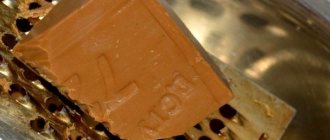Kinds
The procedure is simple, but has rules that must be followed to achieve the desired result without consequences for the body. Depending on the purpose and volume of the solution, the following types are distinguished:
- Oily.
- Hypertensive.
- Cleansing.
Oily
As the name suggests, cleansing needs to be done using various oils. For constipation, you can use olive, sunflower, and Vaseline oil. Once inside, the oil softens the intestinal walls and carefully removes mass from the body.
Before using an enema with vegetable oil, the product must be heated to a temperature of 37-38 degrees. After 10-12 hours, with proper use, the desired effect is achieved.
Hypertensive
If the oil remedy does not help cope with the symptom, you can do a hypertensive enema. The effect occurs within half an hour. Saline enema solution. A salt enema is prepared from regular salt or a pharmacy equivalent.
Salt stimulates peristalsis, and the liquid flushes out stagnant feces.
Cleansing
This is the most effective way to cleanse the intestines in adult patients.
It is necessary to introduce a large volume of water to wash away the feces. The manipulation is carried out using an Esmarch mug filled with cold water. After 5 minutes, the desired effect will be achieved.
What is the best enema to give for constipation?
For constipation, an enema is an emergency measure that should be used as a last resort. By abusing such a procedure, you will not only harm your intestines by washing away beneficial bacteria from it, but also wean your intestines from emptying themselves. After this, you can only dream about regular bowel movements. Cleansing procedures have not only different types, but also volumes. For example, some medicinal microenemas do not exceed 100 ml of fluid introduced into the body.
Oil enema
An oil microenema is administered for spastic constipation with the addition of petroleum jelly or vegetable oil. Add no more than 3 tablespoons per 100 ml of water. The oil solution is administered using a syringe with a volume of 50 to 100 ml. To make the oil work faster, it is better to heat it to a temperature of 38 degrees, then it will facilitate emptying, enveloping the stool and relieving cramps. But don’t expect a quick effect - the oil enema will take effect no earlier than after 8 hours.
Cleansing
Usually, for prolonged constipation, a cleansing enema is given. It quickly softens and removes feces and does not affect muscle tone. To carry it out, you need boiled water and an Esmarch mug. It is ideal when the procedure is performed not independently, but with the help of a professional, since it is inconvenient for the patient to fully control the process.
After the water runs out in Esmarch's mug, the patient should lie on his stomach for 15-20 minutes so that the liquid can penetrate the intestines and greatly soften the stool. If the time is not maintained, then the feces will remain in the intestines, even after the water comes out. For the cleansing procedure, it is advisable to add a decoction of chamomile, which has anti-inflammatory properties, and one teaspoon of apple cider vinegar to improve peristalsis.
Hypertensive
A hypertensive enema is given for constipation to provoke intestinal receptors to cleanse themselves. It is done using a strong saline solution or pharmaceutical preparations, such as:
- magnesia;
- Epsom salt;
- Epsom salt;
- epsom salt.
With a hypertonic enema, the solution increases the osmotic pressure in the intestinal lumen; the salt stimulates peristalsis, absorbing fluid from nearby tissues. Already 20 minutes after this procedure, the intestines are emptied. Not all experts consider this composition useful for constipation, since it has an irritating effect on the intestinal walls.
Solutions
To cleanse the intestines, it is permissible to use different types of solutions. Soapy, soda, salty, with medicinal herbs. All are quite effective and eliminate the symptom quickly.
Herbal enemas cleanse the intestines, eliminate flatulence and bloating, and normalize the level of acidity in the intestines. The soap solution stimulates peristalsis during fecal stagnation. Soda reduces acidity and eliminates pain.
Before the procedure you need to prepare. The site is covered with oilcloth, the syringe or Esmarch tip is sterilized and lubricated with Vaseline. A solution is prepared with which the manipulation will be carried out.
Enemas for the elderly
Constipation occurs much more often in older people than in younger patients. The occurrence of senile constipation is usually due to:
- developed dysbiosis and specific changes in intestinal microflora;
- hormonal changes that occur during menopause and due to dysfunction of the thyroid gland;
- medications (antidepressants, diuretics and anticholinergic drugs, opiates, antipsychotics) taken in large quantities;
- weakening of the muscles of the pelvis and abdominal wall;
- impaired intestinal motility, fraught with the formation of fecal stones;
- irregular nutrition.
As an emergency aid, they resort to performing enemas, especially relevant for bedridden patients in whom constipation is a consequence of chronic physical inactivity.
To alleviate their condition, you can:
- Perform a cleansing procedure that helps liquefy stool, normalize intestinal microflora and wash out mucus and pus. After heating 100 ml of mineral water to room temperature, take it into a rubber bulb-syringe and inject it into the rectum. The act of defecation usually occurs a few minutes later.
- You can help an immobilized patient get rid of a blockage of fecal stones using a microenema containing a decoction of medicinal herbs. To prepare it, take dried linden leaves, chamomile flowers, stems and leaves of motherwort (fifteen grams each), pour a glass of hot water and boil in a water bath for a quarter of an hour. 100 ml of cooled decoction is injected into the patient’s intestines. A quick effect is achieved due to the softening effect of herbs on stagnant feces .
For elderly people who are not bedridden, in case of constipation, you can do the following:
- A cleansing procedure consisting of introducing a liter of boiled water or chamomile decoction at room temperature into the intestines.
- A medicinal enema, which involves the administration of laxative solutions (microlax or phytomucil preparations), heated to improve absorption to body temperature. Before performing the treatment procedure (about half an hour), it is recommended to do a cleansing enema.
- Hypertonic microenema. This procedure is recommended for patients with a thin build.
How to prepare the solution
In order to prepare the cleansing composition, you will need a little time and some ingredients.
Herbal solution
Colon cleansing with a decoction or infusion of medicinal herbs is less aggressive and is allowed for a pregnant woman and a small child. Chamomile is often used for preparation. But it is acceptable to add sage or eucalyptus. Therapeutic enemas from herbs have a gentle effect, but effectively remove stagnant feces.
The recipe is simple. You need to take 2 tablespoons of raw material and pour one liter of boiling water. Leave for an hour and strain.
Oil enema
In case of pronounced defecation delays, the option with oil is the most preferable. Manipulation with sunflower or olive oil is recommended in the evening before bed.
Before the procedure, the oil is heated to 40 degrees. Then it is inserted into the rectum using a syringe. It is not recommended to get up for 15 minutes after finishing the procedure.
Soda
It's easy to prepare the composition. You need to take 30 grams of soda and dilute it in a liter of water. For better cleansing, you can mix soda with salt and dissolve it in water and carry out the procedure. The temperature of the composition should be about 40 degrees. It needs to be slightly warmed up first.
Soap
For preparation, use neutral soap or baby soap without fragrances, dyes or other additives. You need to dilute a small piece of suitable soap in plain water. An enema for constipation with soap is used when the phenomenon is temporary. For chronic and prolonged stagnation of feces, this method is not suitable.
Glycerol
In case of severe constipation, cleansing manipulation with glycerin is prescribed to an adult by the attending physician. It improves gastrointestinal motility. 5-10 ml. Glycerin is injected into the anus with a bulb or syringe. Its effect as a laxative is long lasting. It is recommended to give a glycerin enema no more than twice a month.
Recipe with potassium permanganate
A solution with potassium permanganate helps eliminate stool retention. The liquid should be slightly concentrated, pale pink in color. Potassium permanganate is dissolved in 2 liters of water. The procedure is then carried out as usual.
Lemon
Add the juice of half a lemon to one liter of warm water. The liquid is introduced into the rectum using an Esmarch cup. The solution will soften stool and effectively remove it from the intestines.
Garlic
Constipation can be a consequence of poor nutrition, as well as due to the presence of helminths. Garlic solution will not only eliminate the symptom, but will also remove individual worms and their larvae. Chop a clove of garlic into a glass of water. The solution is injected using a bulb.
What is an enema
An enema is a procedure for introducing liquid into the rectum for the purpose of therapy or diagnosis. Another name for medical manipulation is clyster. If a small amount of liquid is administered (50–200 ml), then this is called a microenema, and the introduction of 1–12 liters of water is considered a macroenema.
A microclyster is intended for the administration of liquids that have a laxative effect, medications, and a macroclyster is prescribed for washing the colon in case of constipation or before preparing for a study or operation. The liquid that is introduced into the intestines helps to soften stool, accelerates their passage, and thanks to the temperature effect it is possible to stimulate peristalsis or relieve spasm of smooth muscles.
The colder the water, the stronger the intestinal wall will contract, therefore, for atonic constipation (when the feces are fragmented, “sheep feces”), cold enemas are given, the temperature of which is up to 12 0C, and for spastic constipation, in order to reduce spasm, fluid administration is indicated 37–39 0C. When administering a medicinal enema, you need to keep the temperature of the liquid at 37–39 0C, so as not to provoke the urge to defecate.
You can add a decoction of chamomile to the liquid (1 spoon per 200 ml of boiling water) or vegetable oil (2 spoons per 1.5 liters of water). Chamomile has an anti-inflammatory and astringent effect, which helps with bloating, and the oil accelerates the elimination of toxins. Apple cider vinegar will enhance intestinal motility (one tablespoon per 1.5 liters of water).
Doctors used to recommend doing a soap enema, but it is now known that soap enema causes severe irritation.
How to carry out the procedure
Once the site and solution are prepared, you can begin the procedure. Giving an enema yourself is easy, but not always convenient. You can ask your loved ones for help.
First you need to take a horizontal position and turn on your left side, bend your legs. With one hand the buttocks are spread apart, with the other the tip is inserted into the anus. This must be done carefully so as not to damage the anus or intestines. Next, Esmarch's bowl is fixed on a tripod.
The solution is introduced slowly. If you feel that emptying will happen immediately, it is better to finish the procedure and lie down for a while, controlling your breathing.
After the solution is administered, lie down for 10 minutes, waiting for the stool to soften. If you empty your bowels immediately after an enema, cleansing will not occur.
Sequence of actions: how to properly administer an enema for constipation
In order for the enema to help cope with the disease, and for the body not to be harmed, the enema must be carried out, adhering to a certain sequence of actions:
- Prepare all the necessary items. Place them within easy reach of you. Make a solution and then pour it into Esmarch’s pear or mug (depending on the type of enema). You can invite an assistant. If you yourself have certain skills and experience, you can do the procedure yourself.
- Cover the venue with oilcloth to avoid damage to property and lengthy cleaning. Place a sheet or soft blanket on the oilcloth.
- Gently lubricate the tip of the tool you are using with Vaseline or a small amount of vegetable oil.
- Lie on your side and press your legs towards your stomach.
- Lightly turning the instrument in your hands, insert the tip into the anus. It should go deep to a depth of about 3 cm.
- Once the tip hits the obstruction, point it towards the spine, and then move it another 8 cm. Be extremely careful when performing this action, since there is a huge possibility of causing damage to the surface of the intestinal mucosa.
- Squeeze the syringe bulb in your hands and hold it until all the liquid from it is inside the body. If you are using an Esmarch mug, then open the tap and then smoothly raise the container by 1 m, which guarantees the correct rate of liquid flow into the intestines.
- Close the tap if you have a strong urge to defecate. Remove the tip from the anus.
- Squeeze your buttocks firmly without changing position. This will help curb the urge to bowel movement and affect the stool. Lie in this position for 10-15 minutes.
- Finally, you should visit the toilet to have a bowel movement.
Colon cleansing in children
Young children often have difficulty digesting. Constipation occurs for the same reasons as in adults. Delayed bowel movements are often accompanied by pain in the abdominal area, which worries the baby. To eliminate the symptom, doctors allow the use of suppositories and cleansing of the intestines with a syringe. But the procedure has its own nuances.
Oil enemas, which have a gentle effect on the intestinal mucosa, are best suited for children. Doctors allow the use of cleansing agents, but the volume of water must correspond to the age and weight of the child. For babies up to one year old, the volume is allowed to be 30 ml; for babies 1-2 years old, the volume is no more than 100 ml.
For an enema, a syringe with a soft tip is used. The solution is introduced gradually and carefully. Before manipulation, you need to consult a pediatrician.
How to do it right
Those who have at least once been affected by the problem of bowel movements, as well as those whose loved ones regularly face it, need to know not only what enema to do to alleviate the condition, but also how to do the enema correctly.
The procedure, in principle, is not at all complicated and even an inexperienced person can do it the first time. You just need to remember the following recommendations:
- Before doing an enema at home, prepare the area for the procedure. If you plan to carry it out using a fast-acting composition, you can do it in the bathroom. It won’t hurt to lay down an oilcloth just in case, because it is unknown how the body will react to the procedure for constipation. If you do it at night, then the bed also needs to be secured, so it will be more comfortable to sleep.
- You also need to prepare the solution in advance. It doesn't hurt to have a container of hot water nearby. The mixture may need to be warmed before use.
- If you are doing an oil enema, you will need to choose a bulb that is suitable in volume. More than 100 ml is not administered at a time, and sometimes 50 ml is enough. You need to use a pear of the same volume. If excess air gets into the intestines, it will cause gas formation and additional discomfort.
- The preparation of the saline solution must strictly comply with the recipe. The dosage must not be exceeded. This threatens irritation and even inflammation of the intestinal walls. Take two tablespoons per 100 ml of water. tablespoons of salt, and if you use magnesia powder, then the amount should be 20–30 mg.
- A cleansing enema is carried out at home using an Esmarch mug, which in appearance resembles an ordinary heating pad. The only difference is in the tip. The procedure is quite lengthy, so before giving an enema, you should take care of the comfort for the patient and the convenience of the person with whose help the session is being done. Ideally, the bowl is at a height of about a meter. You can use a special stand or attach a chair for this, etc.
- An enema at home for constipation is a procedure that confuses the patient. Even if the patient does it on his own, it is not easy to overcome shyness. To facilitate administration, an enema is carried out independently using a bulb, a syringe, or a special cup; the tip must be lubricated with Vaseline or baby cream.
Contraindications
The use of an enema is an emergency measure in the fight against constipation. But this method also has contraindications. The procedure is prohibited for patients with symptoms and diseases:
- Malignant tumor of the rectum. To avoid injury to tumors, it is better to use drug therapy to treat constipation.
- Inflammation of the parietal and visceral layers of the peritoneum.
- Diseases of the cardiovascular system.
- Mental illnesses.
- Haemorrhoids. For bleeding hemorrhoids, this method of combating constipation is contraindicated. Since the tip can cause serious injury to the affected mucous membrane.
- A pathological condition of the rectum in which it is located outside the anus.
- Pathologies of the rectum.
- Weakness, malaise, elevated body temperature.
- Postoperative period.
If the patient has regular stool retention, using the method to cleanse the intestines is not recommended. A case such as chronic constipation requires diagnosis and treatment of the cause of the symptom.
When the tip is inserted, the person feels severe pain - the procedure stops. If pain is present when filling the intestines with a solution, you should also abandon this method of combating constipation. You need to consult a doctor to prescribe medication that can safely eliminate the phenomenon.
Contraindications and precautions
For adults, the rules are less strict, but regular enema is contraindicated in order to prevent the occurrence of dysbacteriosis and atrophy of the intestinal muscles. Often you can only give an oil enema and only under the supervision of a doctor and as prescribed.
Lack of fluid in the diet is one of the main causes of constipation. To get rid of it in 3 days, you need to drink a simple remedy every day.
The laxative procedure is contraindicated for the following gastrointestinal diseases:
- Peptic ulcer;
- Malignant tumors;
- Erosion;
- Bleeding;
- Acute diseases – peritonitis, appendicitis;
- Postoperative, postpartum conditions;
- Aggravated inflammation of the rectum - colitis, proctitis;
- Heart failure.
Practicing gastroenterologist. Work experience: 9 years in a private clinic. If you haven't found the answer to your question, ask the author!
The gastrointestinal tract does not always work correctly. The cause of failures can be nutrition problems, stress, and illness. But if there is a delay in emptying, it can also cause problems in the body and cause serious disruptions in its functioning. An enema for constipation at home is one of the surest and most reliable ways to quickly and effectively solve a piquant issue, and we will try to find out how to prepare a liquid for it, how to give an enema correctly and answers to other equally important questions.
By-effect
Frequent use of the procedure can cause adverse effects on the body. If the procedure is abused:
- Lazy bowel syndrome develops. Motor function is impaired, peristalsis is weakened, and the sensitivity of the mucous membrane decreases. This leads to chronic constipation.
- With regular introduction of liquid into the intestines, beneficial microflora is washed out along with feces. As a result, intestinal upset occurs in the form of chronic constipation or diarrhea.
In case of any of the listed diseases, manipulation is prohibited, but sometimes a symptom in the form of constipation can be eliminated with the help of a microenema. Microlax will relieve the condition quickly.
An enema is an effective way to relieve constipation quickly. A correctly performed procedure will relieve the unpleasant symptom and improve your well-being. It’s easy to install at home, you just need to know some rules and the problem will go away. The cleansing procedure does not eliminate the cause of the symptom. If you experience constipation regularly, you should consult a doctor. The cause of the phenomenon may be a serious illness.
Which enema solution is suitable for a child?
Sometimes there is a need for an enema in children, because they experience constipation, especially in the first months of life, when the intestinal microflora is still developing. But you shouldn’t get carried away - cleansing procedures are needed only in extreme cases. If constipation occurs in a child constantly, then you need to look for the reasons for this phenomenon. For enemas of newborns, a small bulb and different solutions are used:
- Chamomile decoction in the proportion of 2 teaspoons per 200 ml of warm water.
- A solution of table salt, prepared in a proportion of 0.5 teaspoon per 200 ml of warm water.
- A soap solution, which is prepared from a bar of baby soap dissolved in the required volume of water.
- Glycerin dissolved in water in a proportion of 2 teaspoons per 200 ml of warm water.
- Arthritis of the knee joint - symptoms and treatment of the disease
- Meatballs with gravy - recipes step by step with photos. How to cook meatballs in sauce in the oven or slow cooker
- How to charge your phone if the socket is broken. How to fix the charging connector at home with video
Possible side effect
An enema with a hypertonic solution may cause spasm of the intestinal walls. Its consequences include fecal intoxication, increased pressure in the gastrointestinal tract or peritoneum, rupture/stretching of the membranes or adhesions in the anorectal area.
An improperly prepared solution, especially a homemade saline remedy, will irritate the rectal mucosa too much.
Poor quality or damaged enema tips can damage the membranes of the anorectal area.
How often can you do it
We have already said above that correct implementation of this procedure does not cause discomfort. Only relief and visible effect. However, you shouldn't get carried away. The process of bowel movement is natural and human health also depends on how naturally it occurs.
There are enemas that are performed for 3-7 days in a row, and there are those that can be done once a month. Everything is individual and only a doctor can prescribe a regimen, but many do not listen to advice and still get carried away. Most often this applies to those losing weight. Indeed, what could be simpler. I ate, then did an enema and the extra pounds were gone. Such behavior leads to anorexia, thinning of the intestinal walls, weakening of its normal functions and long-term treatment, which sometimes may no longer bring results, and sometimes even to the development of cancerous tumors.
Sometimes young parents get carried away too. They mistakenly believe that by performing an enema, they help the baby, relieve pain, and do not force him to push, but in fact, by doing so they disrupt normal development and become responsible for the occurrence of a variety of and, in most cases, very dangerous diseases that can remain with the baby for life. his life.
Now you know how often you can do an enema, what to use to prepare the composition for it at home, how to carry out the procedure correctly and what needs to be taken into account to make the procedure as comfortable and effective as possible. Follow the recommendations and do not hesitate to ask your doctor any questions you have. Health is the most valuable thing every person has, so there is no point in experimenting with it.
An enema at home is a radical remedy that should help cleanse the intestines during constipation. This method should be used exclusively in cases where other means (laxative foods, laxative folk and pharmaceutical drugs) have not brought results.
The procedure may be necessary if you are preparing for intestinal examinations (colonoscopy, for example), if, against the background of fecal stagnation, intoxication of the body begins, and therefore it is urgently necessary to cleanse yourself. Abuse of enemas leads to sad consequences - the formation of “flaccid bowel” syndrome - intestinal atony. Simply put, the rectum loses its ability to contract, and independent emptying becomes impossible.
Effective solution compositions
A laxative enema requires compliance with a procedural algorithm and certain rules in preparing the solution.
Types of compositions:
- Oily.
- Cleansing.
- Hypertensive.
An oil enema for constipation gently and gently weakens the intestines. It is based on purified vegetable, castor, linseed or vaseline oil, heated to a temperature of 37.5-38 degrees. The substance acts on the walls of the gastrointestinal tract, minimizes spasms, stimulating the evacuation of feces encapsulated in oil. Doctors recommend using it before bedtime for bowel movements in the morning, on average eleven hours after bowel movement.
To cleanse the intestines at home, using herbal decoctions is ideal. Two and a half tablespoons of dried raw materials of calendula, lemon balm, sage, plantain or chamomile or a mixture of them are boiled for several minutes in a liter of water. The liquid is then cooled. It is important to check its temperature before use. It shouldn't be hot.
We recommend reading
- How to properly give a laxative enema to a child at home
- IBS with constipation: treatment of irritable bowel syndrome
- Constipation before menstruation: why it occurs, the main reasons
A hypertensive enema is necessary to achieve the fastest possible effect. This is a saline solution in the proportion: one tablespoon of sodium chloride and two hundred milliliters of boiled cool water. The prepared solution increases the osmotic pressure in the intima of the intestine, stimulating the flow of fluid into the area of accumulation of feces. Affects peristalsis by irritating the mucous membrane. This leads to increased contraction of the intestines and promotes the formation of stool. Washing is contraindicated in case of ulcerative-erosive damage to the skin around the anus, exacerbation of hemorrhoids, tumors and inflammation of the intestine, after operations on it.
Magnesium enema is a common, effective method. The solution acts exclusively on the lower parts of the digestive tract. The composition is prepared from thirty grams of the drug per quarter glass of warm (35-36 degrees) boiled water. The prepared volume must be left overnight.
How to do an enema at home for constipation?
Execution technique
For adults
How to give an enema for constipation at home for an adult? Just follow the simple step-by-step instructions that we have compiled for you:
- The solution must be prepared in advance
- The procedure site must be covered with oilcloth, otherwise there is a high risk of getting very dirty.
- For the option using oil or hypertonic solution, you need to prepare a syringe, disinfect and lubricate its tip with oil.
- For the cleansing procedure, Esmarch's mug is fixed at a height of at least a meter near the procedure site. The end of the hose is also disinfected and lubricated
- Solutions and liquids to be used must be heated to 37-38 degrees
- A person who needs to empty his bowels lies on his left side, presses his knees to his stomach and spreads his buttocks. The tip is carefully inserted into the anus and the liquid is injected into the rectum. To pour water from Esmarch's mug, a special clamp opens on it. After a cleansing and hypertonic enema, you need to lie down for about fifteen minutes and go to the toilet. The effect of the oil will occur, as we have already said, in about ten hours.
For children
The peculiarity of an enema for constipation at home, which is given to children, is for the most part not in the technique of administration, but in the volume of the solution and the choice of syringe. For children with constipation, an enema is given at home using a bulb with a special soft tip. The tip is also sterilized and lubricated with oil, Vaseline or baby cream. The volume of water for the colon cleansing option depends on the age of the child. In infants - about 30 ml, from one year and older - from one hundred to three hundred ml. Hypertensive enema is not given to children. Otherwise, an enema for constipation at home is given to a child in the same way as for an adult.
What to do if a child is constipated at two years old - you will find general recommendations on our website.
For pregnant
An enema for constipation at home is done with caution, as it can provoke uterine contractions. The sad result of this is the threat of termination of pregnancy. Therefore, an enema is strictly prohibited for such groups of pregnant women as:
- Those who have already had a miscarriage
- With increased uterine tone
- With low placentation
- For isthmic-cervical insufficiency
- If there is already a threat of miscarriage
How does a hypertensive enema work: the purpose and benefits of the procedure
The purpose of using hypertonic solutions is to stimulate weakened intestinal functions. In old age, people suffer from constipation caused by atony (loss of the ability of the muscle layer of the intestine to contract). The lack of natural peristalsis forces patients to constantly use laxatives. Excessive use of medications aggravates the problem and contributes to the development of addiction.
Important! The cause of intestinal atony in people over 60 years of age is low mobility due to diseases of the heart and brain. Stimulant drugs are contraindicated, and physical exercise is difficult.
The strongest peristaltic effect is achieved by:
- Prozerin;
- Motilium;
- Peristyl;
- Coordinax;
- Montana;
- Kalimin 60 N.
Motilium is a laxative.
It is produced in the form of a suspension and acts quite quickly. The package includes a dispenser syringe. But they have many contraindications. The doctor cannot safely prescribe for an outpatient appointment. In such cases, laxative hypertensive enemas are especially necessary.
The mechanism of action is as follows:
- artificial increase in osmotic pressure in the cavity of the colon, which causes fluid to pass back through the walls, softening of the stool, and an increase in the volume of the contents;
- direct irritation of intestinal receptors that activate peristalsis.
As a result, feces move towards the anus and emptying occurs. Attracting water from tissues partially relieves swelling and venous congestion.
Indications for use
Indications for a hypertensive enema are directly proportional to what needs to be achieved. This procedure is also prescribed for people who:
- High blood pressure;
- Atonic and persistent constipation;
- Swelling.
An enema is an emergency treatment option for the problem. Patients who have problems with the intestinal mucosa need to be very careful when undergoing this procedure. This manipulation is contraindicated for children.
There are also contraindications:
- Inflammation in the anus.
- Various abdominal pains of unknown origin.
- Haemorrhoids.
- Rectal prolapse.
- Malignant neoplasms in the rectum.
- Bleeding in the gastrointestinal tract.
Video:
Contraindications for hypertensive enema
Cases when a person, without consulting a doctor, at the first sign of constipation tries to douche, are common. Doctors recommend avoiding such actions until the last minute and using teas or medications for medicinal purposes. The procedure is indicated only in emergency cases; if this procedure is performed frequently, there is a risk of aggravating the pathology and making it more difficult to cope with. There are critical contraindications to an enema:
- the first few days after abdominal surgery;
- severe heart failure;
- constipation due to hemorrhoids, uterine, gastrointestinal, hemorrhoidal bleeding;
- inflammation in the rectum, which is associated with erosive, ulcerative manifestations (ulcers, erosions, proctitis, sigmoiditis, fissures);
- peritonitis, appendicitis and other acute conditions due to pathology of the abdominal organs;
- rectal prolapse;
- intestinal tumors (at any location);
- suspicion of surgical pathology, the presence of pain during constipation.
Mechanism of action of hypertonic saline enema
As is clear from the name itself, a hypertonic salt solution (magnesium sulfate, sodium chloride) is used to perform a hypertonic enema.
The main part of the extracellular substance and cellular contents is water, in which various substances are dissolved, including mineral salts. These substances determine the osmotic pressure of the liquid, which in the human body is largely maintained by sodium chloride ions at a concentration of 0.9%.
Ions have the ability to move from an area of higher concentration to an area of lower concentration. That is, if, for example, the osmotic pressure in the extracellular fluid becomes greater, then ions will begin to actively move into the cell, and water from the cell will exit into the intercellular space, trying to dilute and thereby reduce the concentration of the intercellular fluid.
If necessary, the doctor can write a prescription and a hypertonic solution will be prepared according to it at the pharmacy.
A solution that is isotonic or physiological in relation to blood plasma is called 0.9% sodium chloride solution. If its concentration is higher, the solution is called hypertonic, and if it is lower, it is called hypotonic.
When a hypertonic solution is introduced into the rectum, fluid from the soft tissues begins to flow into the intestinal lumen. This puts pressure on the intestinal walls, irritating nerve receptors, which causes profuse bowel movements.











